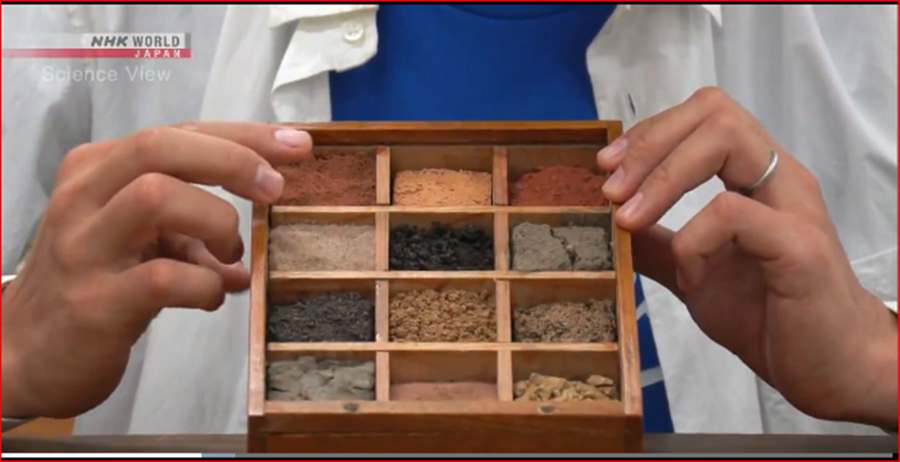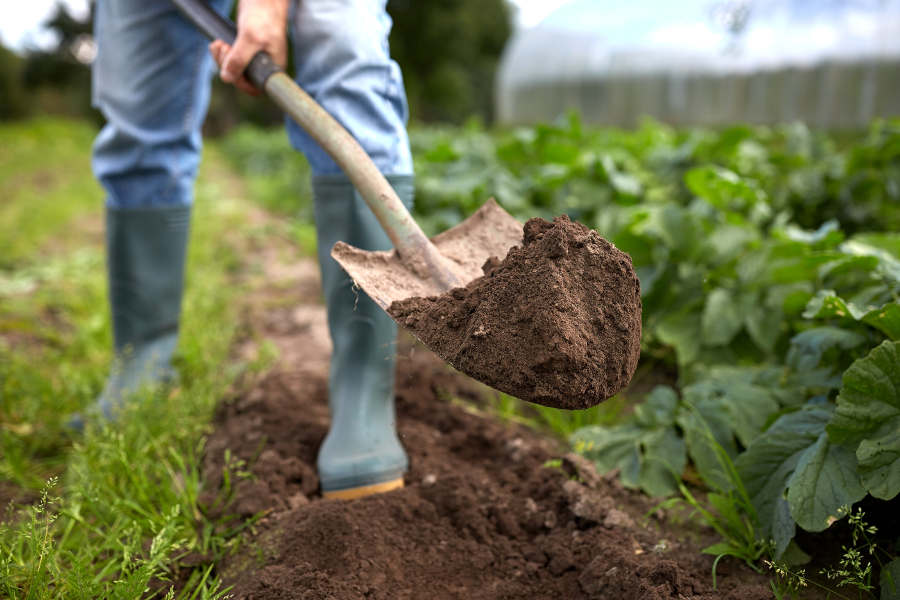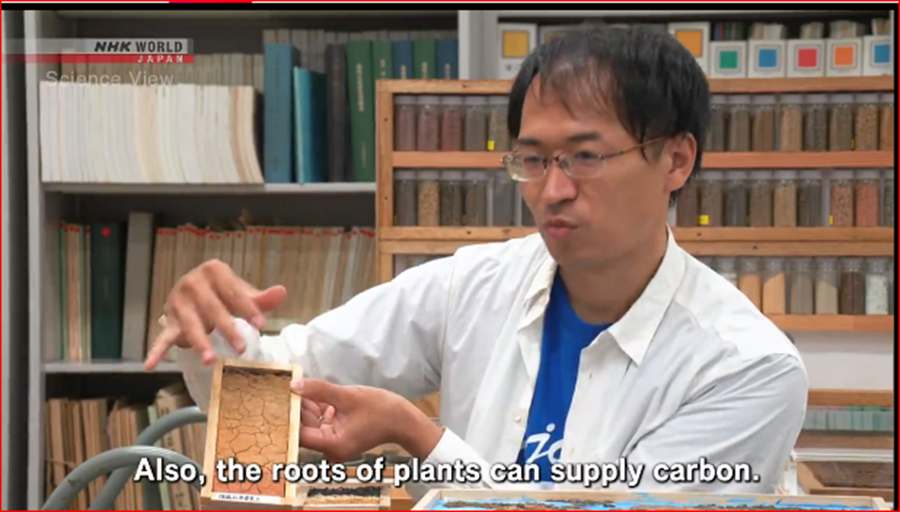I WANT
RELATED LINKS
I WANT
RELATED LINKS
RELATES LINKS
I WANT
RELATES LINKS
Services
Related Links
Use and Management of Cookies
We use cookies and other similar technologies on our website to enhance your browsing experience. For more information, please visit our Cookies Notice.
- Personal Banking
- Stories & Tips
- Tips for You
- Develop Soil Quality to Support People on Earth
- Personal Banking
- ...
- Develop Soil Quality to Support People on Earth
Develop Soil Quality to Support People on Earth
07-10-2020
The world population has been gradually rising and will hit ten billion in the next 30 years. Did you know that the world is now producing agricultural food products about 80% of the world population from only 11% of good quality soil? That means if good soil for planting does not increase, people will inevitably face a lack of food problems. Kazumichi Fujii, a Japanese researcher, has seriously devoted himself to study soil research with the hope that he can develop the rest of 89% of soil to be healthy for planting and to solve food problems for the world population in the future. We will pursue his study which aims to create soil and sufficient food resources for human beings.

Kazumichi Fujii has studied soil around the world from Africa to the north of Canada. He is one of the few soil researchers who focuses on fieldwork with an objective to protect the world from food lacking. As good soil for planting is rare to find and there is only one way to guard the world against food crisis that is to increase soil quality. He studied why some soil can’t generate productivity and suggested that if we can turn 89% of the soil to be healthy, we can prevent food scarcity in the future. He studied soil for 10 years after graduating from the university. Even though he doesn’t gain much income from this type of work and he has to work alone, his goal has never changed.
The study states that there are 12 different soil types from over the world. The soil in Ukraine and North America is highly fertile for planting while the soil in Alaska and Siberia is unhealthy. The soil in Southeast Asia is yellow while in Japan is black and lightweight because it contains volcanic ash. This shows that soil varies from one place depending on the inherence of each region and different climates. Soil is classified by its features such as color, texture, mud content, water amount, and mineral components.

Soil that is rich for planting has similar feature that is the amount of mud, good proportion of stones and sand. Good soil also contains Humus, an organic component of soil, such as dry leaves, rotting leaves and animal muck. The more Humus is in soil, the better quality of soil for planting. It’s found that black soil which is called Chernozem or Emperor soil in Ukraine and North America is the healthiest quality for planting. When comparing to Japanese soil which is blacker, it’s not as healthy as black soil in Ukraine and North America. Soil in those two continents is moist and contains good minerals. However, this type of soil is very rare to find because those lands are dry, and the pump water used for agriculture comes from underground so it’s much salty. If water is not well-drained, salt will build upon the soil surface that makes soil salty so that area can no longer plant anything. Besides, too frequent planting will cause wind erosion; that means the wind blows good soil surface away and soil is not healthy for planting anymore. Even though the previous soil is in good condition, it doesn’t always remain like that, if the soil is used inappropriately. The solution is to learn from existing problems and to prevent the recurrence of those problems. Thus, it’s essential to provide knowledge for agriculturists. Kazumichi made a survey trip to North America and found that 33% of good soil has disappeared in 40 years, but it takes many thousands of years for nature to create good soil like that for only a few centimeters thick.

While the amount of good quality soil is gradually reduced, the number of the world population is constantly increased. The United Nations predicts that the world population will reach ten billion in 2050. If it is so, a food crisis will occur. That’s why Kazumichi is exploring ways to utilize good soil. We feed 6 billion people throughout the world with 11 % good soil out of all soils in the world. If we develop 89% of the soil to be perfect for planting, we can solve food deficiency problems. It takes many thousands of years for a stone to change to the soil. We cannot only rely on nature that’s why Kazumichi believes that study solely doesn’t bring advantage as it should lead to real practices.

His great discovery happened in Indonesia when he traveled to Borneo island to do research with local researchers. The soil in Borneo is rainforest and heavy soil with high moisture which doesn’t give good agricultural productivity. At first, Kazumichi thought that rainforest soil is healthy but deforestation has left only 3 centimeters thick of good soil, and that soil will be gone by 2-3 years of planting. Agriculturists then have to do their cultivation on yellow and red soil which no plants can grow. That’s why they have encroached and damaged forest areas in order to extend agricultural land and that has become a vicious circle which is not the right solution. Kazumichi and local researchers found ways to improve soil quality without deforestation by studying a variety of local plants growing around that area. He found Cogon grass that contains high Potassium. If we burn grass, the ash will increase potassium to the soil. Another plant is Legume which is high in Nitrogen, and Macaranga leaf which is high in Phosphorus. This means that there is three food minerals source for soil namely Potassium, Nitrogen, and Phosphorus. Also, the roots of plants produce Carbon so all those compositions will help build black soil and other essential components for planting. Innovation has started by adding Humus and food minerals into the soil. Using dry and rotting leaves including grass covering the ground to develop soil, is at affordable cost and there’s no need to buy chemicals which is more expensive and delivers a negative effect on soil in the long term.
Kazumichi said that we must help farming people to do planting up to 100 years not just 3 years. If unhealthy soil can be developed to bring out long cultivation, it will build hope for other local agriculturists to improve the soil in their regions. After Kazumichi gaining fame as soil expertise, he has joined soil development projects with other regions over the world. His observance and skepticism keep his work forward. Although he hasn’t succeeded in developing the rest of 89% of soil, his tremendous effort proved that he has created good things for the world, and it may light up tons of people to join hands in making this world a better place.
How do we use limited resources to the utmost benefit and improve the best soil quality? Kazumichi is still persistent in his studies every day to make ten billion people live happily and to be free from food crises in the future. On his holiday break from research, he normally gives lectures about soil story “the more people are interested in soil research and development, the more encouraging power I will move on”, said Kazumichi.
Reference
